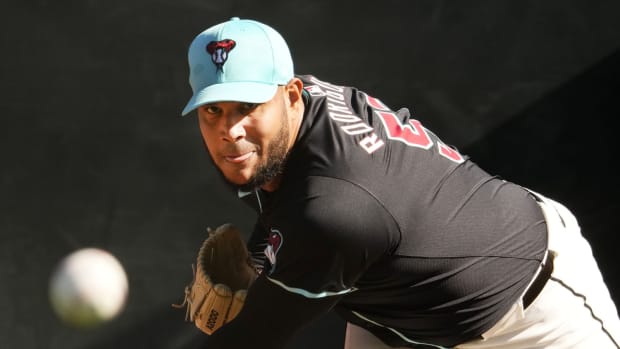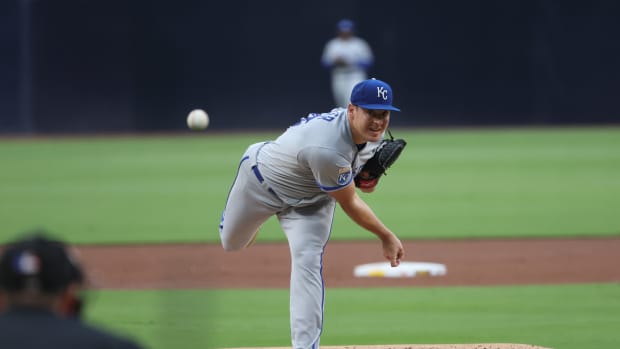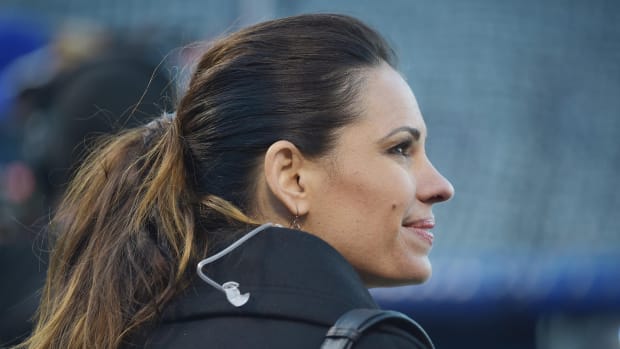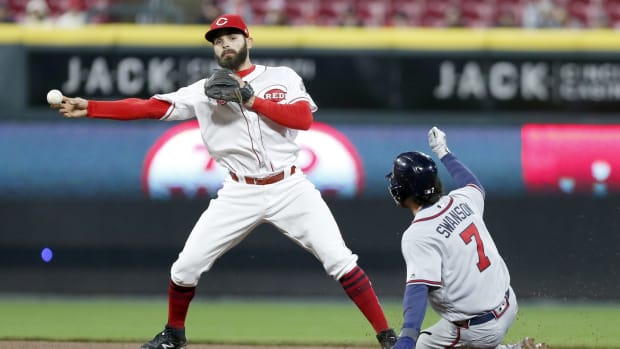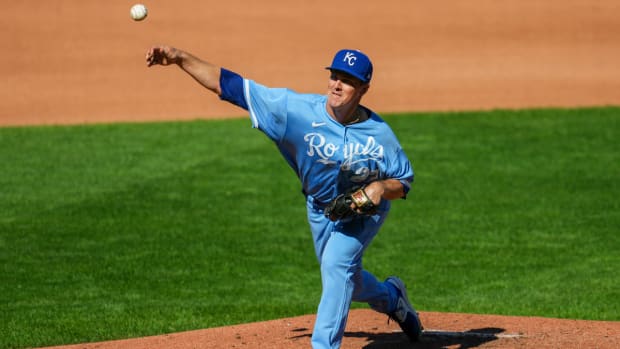Royals Free Agent Pitching Targets: Joe Ross
Joe Ross falls into the reclamation project category, along with Chad Kuhl. Still, the last time anyone saw Ross pitch, he was effective as the No. 4 starter in the Washington Nationals' rotation. The 2021 season saw him log career highs in K/9 (9.08) and innings pitches (108.0) while not walking a lot of batters (2.83 BB/9). That led to his second-highest fWAR campaign, tied with his rookie season of 1.4.
The big thing with signing Ross is that the Kansas City Royals would have to wait for a bit, around the midway point of the season, due to his recovery from Tommy John surgery. That might sour any chance to be signed as the Royals likely want to bring someone in before the season, but keeping an eye on Ross is still worthwhile for a couple of reasons.
Even with his somewhat extensive injury history, Ross can eat some innings. Using IP/GS (innings pitched per game started) over the duration of Ross's career, he averages nearly six innings pitched per start at 5.978. Looking at 2021 for the same stat, it was 5.68 — middle of the road for him.
Another reason to keep an eye on him is his through-the-order splits as a starter in his career (of note: he was not a good reliever). His opposing slash line is .219/.280/.305 with an OPS of .585, which is really good. Add in his 3.6 K:BB ratio and a staggeringly low wOBA of .259, and you see that he is at his best early in his starts.
The second time through the order gets a little messy for Ross. He gives up more home runs and hits, and batters get on base more often (.340 OBP). This isn't the end of the world, though, as his ERA (4.25) is in line with the average middle or back-end of the rotation pitcher. He still gets almost a strikeout per innings and doesn't walk too many batters, but he gives up more contact.
Speaking of contact, if we look at his 2021 zone contact% (% of contact made in the zone by hitters) and Chase contact% (% of contact made out of the zone by hitters), Ross put up career bests in both with a zone contact% of 78.8 and a chase contact% of 61.3. Add in total contact% of 76.1 — his best since his rookie season — and Ross made batters miss a touch more often.
All of this is really good, but of course, there is a key issue with Ross's 2021. He gave up a healthy amount of home runs (1.42 HR/9). One reason for that is his inflated flyball rate of 30.7%, which is high. As that flyball rate increases, the chance that a hitter will knock a home run out of the park increases. Ross's HR/FB% indicates this as it is at 15.5%, which again is high.
Looking at FanGraphs' projections for Ross shows that he could give whoever signs him some solid innings and be serviceable. Both Steamer and FGDC say that he will have a 4.45 ERA, a FIP of 4.39, get 10 starts and finish the season with an fWAR of 0.4. All of that is solid for a pitcher coming off of his second Tommy John surgery.
Ross should/will be cheap as he is again coming off an injury. In 2022 he signed a $2.4 million dollar deal, so he will probably stay in the $2M-$5M range. That depends on the market, but the Royals should be able to afford him. Kansas City will sign someone this offseason well before Ross is ready to go but if they are still eyeing the market midway through the season, Ross would make sense as a rotation filler for a team that needs pitching help.

